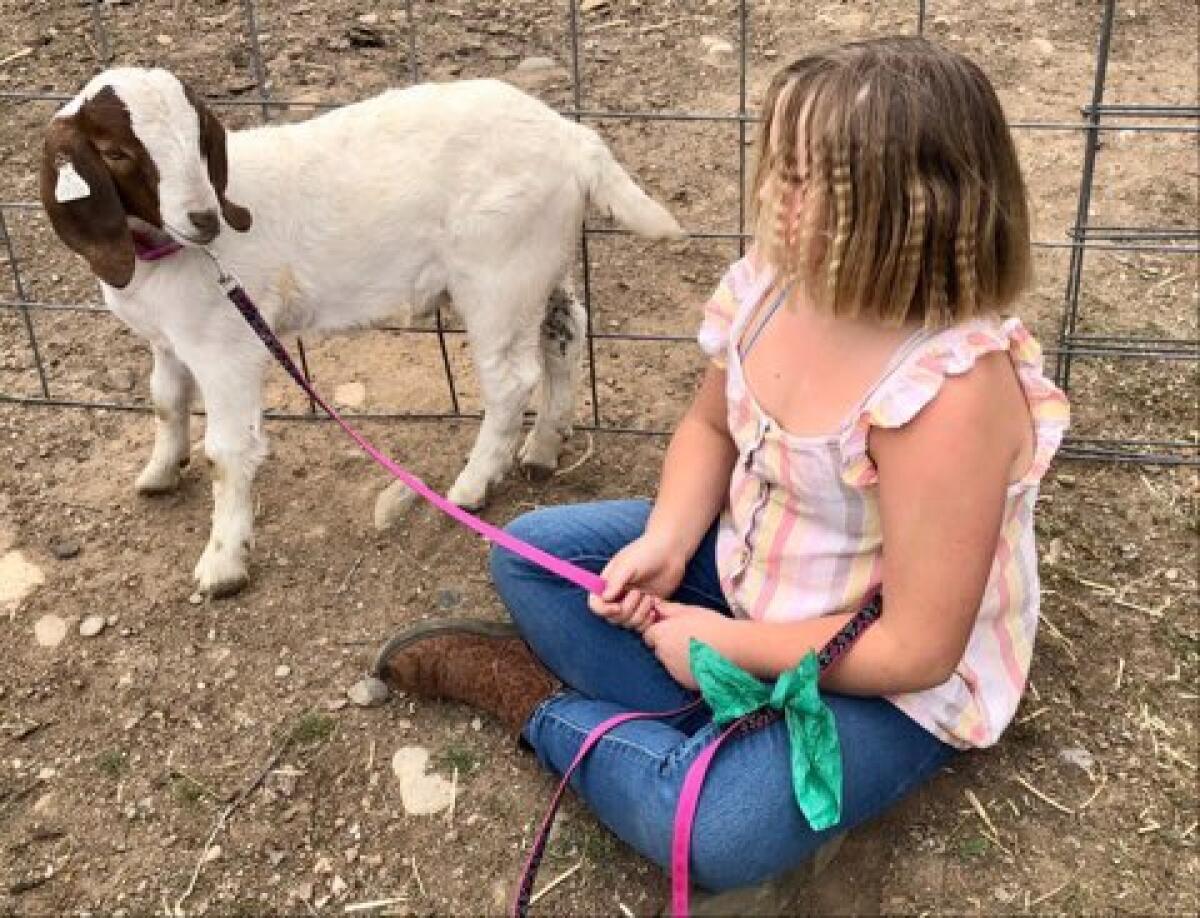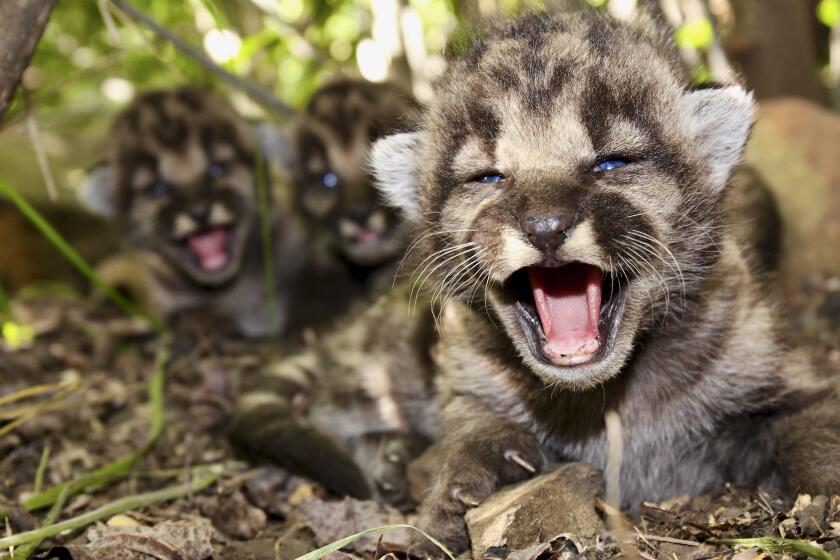Commentary: Where’s the humanity? Shasta fair chose to slaughter a girl’s goat to teach her a lesson

- Share via
The Shasta District Fair last year ended disastrously for a 9-year old girl and her goat. And it didn’t end so well for the Shasta County fair officials who sent law enforcement hunting with a search warrant for the animal after the girl decided she didn’t want it killed. The goat got slaughtered. But the fair officials got pretty beat up on social media.
Jessica Long’s daughter — identified in a pending lawsuit only as E.L. — raised the big-eyed, floppy-eared Cedar as part of a 4-H youth project. She entered him in the Shasta District Fair junior livestock auction, which happens to be something called a terminal auction. The animals that are bought are killed and their meat is turned over to the winning bidders. Just before the auction, the young girl told her mother that she couldn’t go through with sending Cedar to slaughter and wanted out. Fair officials refused, according to the lawsuit. After the auction, with her daughter sobbing in Cedar’s pen, Long took Cedar and, as she later wrote to fair officials, decided to suffer the consequences later. Mother, daughter and goat left the fair and went to a farm more than 200 miles away in Sonoma County.
Long offered to let the fair keep the entire $902 that was bid for the goat and pay any other costs. But fair officials told her to bring the goat back or law enforcement would be involved. Sure enough, on July 8, two sheriff’s deputies drove nearly 500 miles to find and take the goat back, according to the lawsuit.
A 9-year-old girl didn’t want her goat slaughtered. California fair officials sent deputies after it
Jessica Long’s 9-year-old didn’t want her goat, Cedar, to be slaughtered at the county fair. Officials sent deputies with a search warrant to get it back.
The fair’s chief executive, Melanie Silva, had written to Long in an email that letting the girl take her goat back would only teach youngsters that they don’t have to abide by rules. “Also,” said the email, “in this era of social media this has been a negative experience for the fairgrounds as this has been all over Facebook and Instagram.”
And the fair executives thought sending a posse of sheriff’s deputies to confiscate the goat for slaughter, breaking a little girl’s heart, would improve their social media image?
Long and her daughter filed a lawsuit in federal court against fair officials and the Shasta County Sheriff’s Department, contending that their 4th and 14th amendment rights were violated and arguing that the girl was the owner of the goat through the duration of the fair. And besides, the girl (now 10) had a right as a minor under California law to back out of her agreement to sell the goat for slaughter, according to the suit.
Whatever the legal rights are here, if the fair officials had just shown a little humanity toward a young girl desperate to keep her goat, they could have spared themselves a rash of bad publicity, a still growing online petition denouncing the fair’s actions and a lawsuit.
A new study underlines just how dangerous it is for California’s mountain lions. We need to build more road crossings and lessen our use of rodenticides if we want to keep them among us.
And the young girl’s plight here is not as rare as you think. Ryan Gordon, the lawyer representing Long, said that every year, his firm, Advancing Law for Animals, is contacted by youngsters participating in fairs who are looking to save their animals from slaughter-only auctions. Several years ago, he represented the songwriter Diane Warren, who bought a lamb, Cotton, from a slaughter-only auction at a Santa Barbara County fair after the boy who raised Cotton asked for her help. “The fair refused to turn over Cotton alive and said it would only deliver his meat,” Gordon said. “Ms. Warren retained us, and we acquired an emergency court order providing a last-minute stay of execution against the slaughterhouse.”
If the point of livestock programs is to get young people accustomed to raising farm animals for auction and slaughter but some youngsters get to the auction and change their minds, then the organizers should abide by the children’s decisions. Did the kids fail to accept the realities of raising animals for slaughter? Sure. So they may not become future factory farmers of America. That’s fine. Educational programs, including those through 4-H, are supposed to offer young people a chance to discover what they want to do — or not do — with their lives.
I eat meat. I understand that animals get killed for food on my plate — and they generally lead far more miserable lives than Cedar did. But fair officials trying to force a youngster into participating in the slaughter of an animal is not only ridiculous, it’s also cruel.
It’s almost fair season again. The Shasta event starts in late June. Maybe fairs, along with 4-H and Future Farmers of America, should consider having exhibitions of animals that show what goes into caring for farm animals without a terminal auction. Or young animal owners could be allowed to opt out of the terminal auction — an option that should be made clear to everyone. Perhaps there could be an auction of animals for other roles, such as working at weed abatement or being part of a school program.
Here is one youngster who decided she couldn’t be part of this food chain — or more specifically let her goat be part of it. On the 4-H website, the organization promises that its projects will help kids “to grow confidence, independence, resilience, and compassion.” I’d say this young girl demonstrated all those when she decided to pull her goat from the fair.
More to Read
A cure for the common opinion
Get thought-provoking perspectives with our weekly newsletter.
You may occasionally receive promotional content from the Los Angeles Times.













